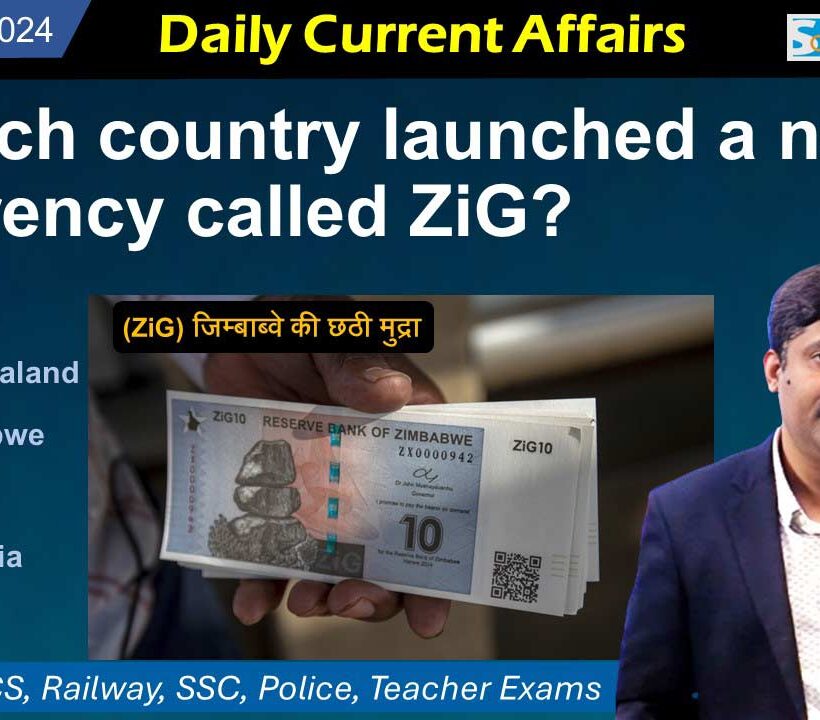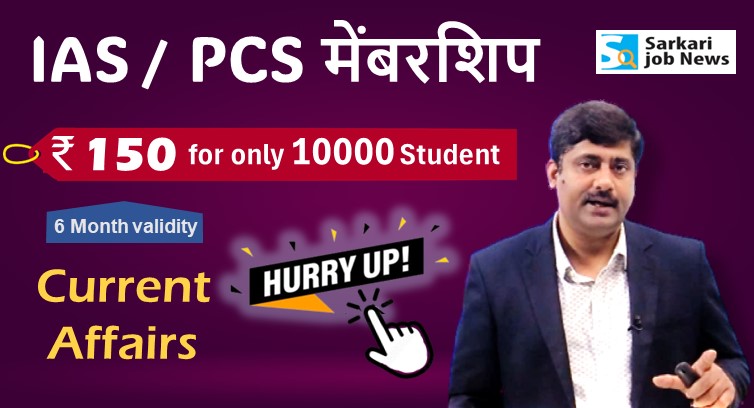This is the current affairs of 5 & 6 May 2024. Here are questions and answers of daily current affairs for better preparation of competitive exams for government jobs.
PDF Download: Click here
1. Which neighbouring country decided to print its map including the Indian territories of Lipulekh, Limpiyadhura and Kalapani on the Rs 100 note?
a. Pakistan
b. China
c. Nepal
d. Sri Lanka
Answer: c. Nepal
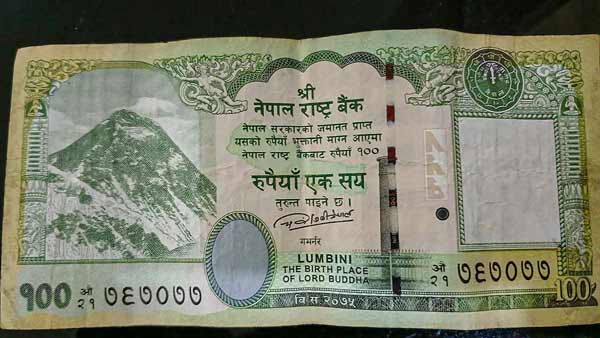
– In a meeting chaired by Nepal’s Prime Minister Pushpa Kamal Dahal Prachanda on May 4, 2024, this decision was taken.
– New notes of 100 rupees will be printed in Nepal. They will also feature a map of the country.
– According to news agency PTI, this map will also include those areas that India claims as its own.
– In fact, on June 18, 2020, Nepal had amended its constitution to include Lipulekh, Kalapani, and Limpiyadhura areas of India in its political map, citing the Sugauli Treaty.
– The Indian government has expressed opposition to the recent steps taken by the Nepalese government.
– It is noteworthy that Prime Minister Prachanda formed a government with the CPN-UML party in March, breaking the alliance with the Nepali Congress party.
– The leader of this party is KP Sharma Oli, who is said to be a supporter of China.
Lipulekh, Kalapani, and Limpiyadhura
– These three areas are part of the Indian state of Uttarakhand’s Pithoragarh district.
– This region is highly strategic due to its location and because of China.
– Because we are at a higher altitude here while China is below. In the event of a conflict, India could have a significant advantage over China from this area.
Sugauli Treaty, 1816
– The Sugauli Treaty was signed in 1816 between British India (which was under the East India Company at that time) and the King of Nepal.
– It was the outcome of the nearly two-year (1814-16) Anglo-Nepalese War.
– While the British left in 1947, this treaty remains important for us even today.
– Because it determined the border between India and Nepal.
– And even today, basing its position on this treaty, India maintains its stance in the Kalapani dispute.
Why did the war happen?
– A major reason behind this war between the East India Company and Nepal was the then Governor-General of Bengal, Lord Francis Hastings (1813-1823).
– Hastings, upon arriving in India, observed that in northern India, there were three major powers with whom they had no alliances or subsidiary arrangements.
– The first was Nepal, the second were the Rajput states, and the third was the Sikh alliance.
– The Rajput states were gradually being brought under their influence, but the Sikh community was still not under their control.
– The East India Company also desired to trade with Tibet, but Nepal stood in their way.
– On the other hand, due to the Sikh Empire, the route via Kashmir was also blocked.
– The East India Company sent a proposal to the King of Nepal, offering trading rights so that they could access Tibet.
– However, the King of Nepal refused to grant trading rights.
Finding the opportunity for war?
– At that time, Hastings observed that there was a border dispute concerning the Terai region between Awadh and Nepal.
– Based on this, the British initiated war with Nepal.
– Nepal of that time was considerably larger than present-day Nepal.
– A significant part of our India, including Uttarakhand and Himachal Pradesh, was under its control at that time.
Nepal was quite large
– Here is the map of that time, showing Nepal’s boundary extending from Himachal Pradesh to Sikkim.
– Nepal had won the territory on both sides through warfare.
– At one point, the rule of the Gorkha kingdom had extended to the Kangra fort in the Gokhara region.
– The British saw that the Gorkha kingdom of Nepal was expanding.
– Today, Nepal has shrunk to its current size, and a significant reason for this is the Sugauli Treaty after this war.
Two years after the war, the treaty
– Despite the valiant efforts of the Gurkhas, the East India Company started gaining ground in the Anglo-Nepalese War that lasted for 2 years (1814-16). The British had better weapons.
– However, both sides realized that the war was dragging on.
– At that point, a treaty was reached from both sides, known as the Sugauli Treaty.
Where is Sugauli
– It’s a village near the India-Nepal border.
– It’s in the Champaran district of Bihar.
– It was here that the treaty was signed on December 2, 1815.
– However, it was officially ratified in the year 1816.
– This means the seal of the Gurkha King and the sign of the Governor-General of the East India Company were affixed on March 4, 1816.
– Hence, it’s called the Sugauli Treaty of 1816.
Provisions of the Treaty
– According to the treaty, the territories that the Gorkha Empire had conquered before this war were all incorporated into British India.
– This includes what is now Uttarakhand and parts of Himachal Pradesh.
– Additionally, Nepal had to relinquish the disputed areas with Awadh.
– Moreover, the East India Company secured the independence of Sikkim, a state over which Nepal had ruled for 40 years.
– Thus, Nepal’s boundaries were reduced on three sides.
Nepal lost a third of its territory
– Nearly a third of the territory slipped from Nepal’s grasp.
– Rivers were designated to demarcate these areas.
– To the west, the Mahakali River or Sharda River was fixed as the boundary.
– To the east, the Mechi River was considered the boundary.
– Even today, Nepal’s boundaries are determined by these two rivers on both sides.
– These delineations were clearly stated in the Treaty of Sugauli.
—-
However, after independence, India entered into a new treaty with Nepal in 1950. It was called the Treaty of Peace and Friendship.
——
The Nepal map dispute:
– According to the Sugauli Treaty of 1816 between the British and the King of Nepal, the Mahakali River serves as the international border between India and Nepal.
– However, as with many rivers, they often branch out into multiple channels, and the Mahakali River is no exception.
– India contends that the channel of the Mahakali River near Lipulekh is the border.
– But Nepal claims that a branch of the Mahakali River originates from Limpiyadhura, which constitutes the real India-Nepal boundary.
– This dispute resurfaced in November 2019 when India published a revised political map, incorporating the newly created union territories of Jammu and Kashmir and Ladakh.
– Subsequently, in 2020, then-Prime Minister KP Sharma Oli, who is considered pro-China, made it an issue. Following this, the parliament passed a new map.
– Essentially, before 2020, Nepal’s own map depicted three areas (Lipulekh, Limpiyadhura, and Kalapani) as part of India.
– This area is approximately 400 square kilometers, and India has actual control over it.
The sentiment of nationalism in Nepal:
– Just as there’s talk of Akhand Bharat (Greater India) in India, some political parties and organizations often discuss the concept of Greater Nepal in Nepal.
– They believe that the entire Uttarakhand, parts of Himachal Pradesh, and even Sikkim belong to them, which are currently part of India.
– This is why, after the parliament passed a new map in 2020, people celebrated Diwali there, feeling like they had taken the first step towards victory.
– China’s role in this whole affair is highly suspicious.
– Capital: Kathmandu
– Currency: Nepalese Rupee
– Language: Nepali
– Population: 30.5 million (2022)
Nepal shares a border of over 1,850 km with five Indian states – Sikkim, West Bengal, Bihar, Uttar Pradesh, and Uttarakhand.
—————
2. Which country launched a new currency called ZiG?
a. New Zealand
b. Zimbabwe
c. Israel
d. Malaysia
Answer: b. Zimbabwe

– In April 2024, Zimbabwe introduced a new currency called the “Jig.”
– It replaces the old currency, the Zimbabwe Dollar (ZW$), which had been adversely affected by depreciation and loss of public trust.
– Initially, the Jig was introduced electronically in April, but the Reserve Bank of Zimbabwe (RBZ) now says that people can use it as banknotes and coins.
– This is an attempt to halt the long-standing currency crisis in the southern African country.
– The Jig is a shorthand for Zimbabwe’s gold, although some government departments have also refused to accept it.
Sixth currency after 2009
– Since 2009, the “ZiG” (Zimbabwe Gold) has been Zimbabwe’s sixth currency.
– Before this, due to the currency crisis, the US Dollar was first designated as legal tender, then it was banned, and later the ban was lifted.
– People still consider the US Dollar as a safe currency.
– The government has allowed some businesses like gas stations to refuse acceptance of the ZiG.
– Some government offices like the passport department are only accepting the US Dollar!
Zimbabwe:
– Capital: Harare
– Prime Minister: Morgan Tsvangirai
– President: Emmerson Mnangagwa
– Languages: English, Shona, and Ndebele
– Population: 16.3 million (2022)
————–
3. 75 representatives from the election management bodies of how many countries came to India to witness the world’s largest election (Lok Sabha elections 2024)?
a. 10
b. 17
c. 21
d. 23
Answer: d. 23
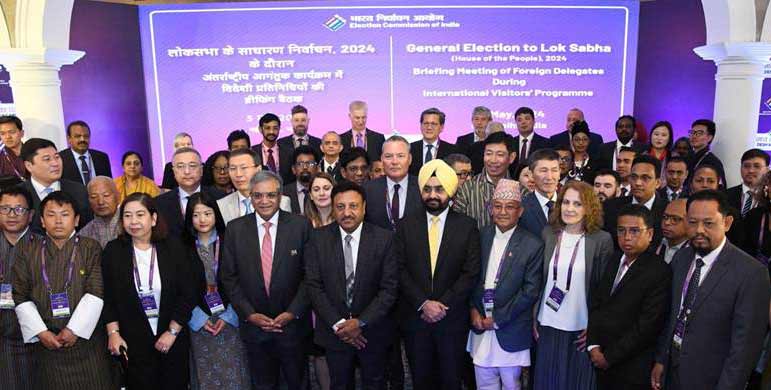
– Representatives from 75 Election Management Bodies (EMBs) and organizations from these countries participated.
– This included members of the International Foundation for Electoral Systems (IFES) and media from Bhutan and Israel.
– The EMB is a program inaugurated in April 2024 in New Delhi, with the presence of the Chief Election Commissioner and Deputy Election Commissioners.
The objective of the EMB program:
– The objective of this program is to familiarize Election Management Bodies (EMBs) from foreign countries with the intricacies of India’s electoral system, as well as the best practices adopted for elections in the world’s largest democracy.
Duration of the program:
– The program commenced on May 4th. The Election Commission addressed these foreign representatives on May 5th.
– Subsequently, these representatives embarked on journeys to six states – Maharashtra, Goa, Gujarat, Karnataka, Madhya Pradesh, and Uttar Pradesh.
– They are inspecting polling and related preparations in various electoral constituencies there.
– This program will conclude on May 9th, 2024.
Representatives from which 23 countries visited India?
– Bhutan, Mongolia, Australia, Madagascar, Fiji, Kyrgyzstan, Russia, Moldova, Tunisia, Seychelles, Cambodia, Nepal, the Philippines, Sri Lanka, Zimbabwe, Bangladesh, Kazakhstan, Georgia, Chile, Uzbekistan, Maldives, Papua New Guinea, and Namibia.
Until when is the Lok Sabha election?
– The Lok Sabha elections for the 18th Lok Sabha are taking place in seven phases from April 19, 2024, to June 1, 2024, across the country.
– Vote counting will take place on June 4, 2024.
About the Election Commission of India:
– Established on: January 25, 1950
Chief Election Commissioner: Rajiv Kumar
Election Commissioners: Sukhbir Singh Sandhu and Gyanesh Kumar
————–
4. The Supreme Court has reserved what percentage of seats for women in the executive committee of the Supreme Court Bar Association (SCBA)?
a. 25%
b. 33%
c. 37%
d. 40%
Answer: b. 33%

– This is a significant step by the Supreme Court in the direction of women’s empowerment.
– This order was issued by the bench of Justice Suryakant and Justice KV Vishwanathan.
– This arrangement will be effective for the 2024 elections of the Supreme Court Bar Association (SCBA).
– For this, elections will be held on May 16, 2024, this month.
– Vote counting will take place on May 18, 2024.
Reserved positions:
– The Supreme Court stated that out of 9 executive members in the SCBA office, 3 will be women. And out of 6 senior executive members, 2 will be women. Meaning thereby, three-quarters of the seats are reserved.
– The position of the SCBA President is not included in the reserved positions.
Supreme Court Bar Association (SCBA):
– This is an Indian Bar Association.
– It includes practicing lawyers of the Supreme Court of India.
– Adish Aggarwal is the current President of the Association.
————-
5. Which actress has been appointed the new national ambassador of UNICEF India?
a. Priyanka Chopra
b. Kareena Kapoor Khan
c. Alia Bhatt
d. Deepika Padukone
Answer: b. Kareena Kapoor Khan

– On May 4, 2024, UNICEF India celebrated 75 years of partnership with India.
– On the same day, Kareena Kapoor Khan was appointed as the National Ambassador for the organization UNICEF.
– She has been associated with this organization as a celebrity advocate since the year 2014.
Note: – Prior to this, Ayushmann Khurrana was appointed as the National Ambassador in India by UNICEF in February 2023.
What will Kareena Kapoor do?
– In her role, she will support UNICEF India in advancing the rights of every child, focusing on early childhood development, health, education, and gender equality.
– She has been assisting in several global campaigns of UNICEF under #EveryChildRights.
Appointment of Four Young Advocates for the First Time
– UNICEF India announced the appointment of four young advocates for the first time.
– This announcement was made during a program on May 4, 2024, marking 75 years of partnership with India by UNICEF India.
– These four young advocates are collaborators and champions on issues such as climate action, mental health, innovation, and STEM for girls.
Names and States of these Youth:
1- Gauranshi Sharma (Madhya Pradesh)
2- Kartik Varma (Uttar Pradesh)
3- Nahid Afrin (Assam)
4- Vinisha Umashankar (Tamil Nadu)
UNICEF Overview:
– This organization operates in nearly 190 countries.
– Its objective is to protect the rights of children globally.
– UNICEF stands for United Nations International Children’s Emergency Fund.
– Founded: 1946
– Headquarters: New York
– Executive Director: Catherine M. Russell
—————
6. The UNESCO/Guillermo Cano World Press Freedom Prize 2024 was awarded to journalists of which country?
a. Palestine
b. Ukraine
c. Iran
d. Israel
Answer: a. Palestine

– Palestinian journalists covering Gaza have been selected as winners of the 2024 UNESCO/Guillermo Cano World Press Freedom Prize.
– The award ceremony will take place on May 2, 2024, during the World Press Freedom Conference in Santiago, Chile.
– These Palestinian journalists have witnessed the destruction of a significant part of their homeland in the relentless bombing by Israel in Gaza.
– Jury Chair Mauricio Vieira said, “In these times of despair, we want to recognize those Palestinian journalists who are covering the Gaza crisis, spreading the message of solidarity with them, even in these dangerous conditions.”
– According to UNESCO, since October 7, 2023, 26 journalists and media workers have been killed while doing their work.
About the Award:
– Established in 1997, the annual UNESCO/Guillermo Cano World Press Freedom Prize honors individuals, organizations, or institutions that have made outstanding contributions to the defense and promotion of press freedom worldwide.
– It is awarded by UNESCO on May 3, the World Press Freedom Day.
– It is named in honor of Colombian journalist Guillermo Cano Isaza, who was assassinated on December 17, 1986, outside his newspaper’s office, El Espectador, in Bogotá, Colombia.
————–
7. When is Coal miner’s day celebrated?
a. 1 May
b. 2 May
c. 3 May
d. 4 May
Answer: d. 4 May
– Coal Miners Day is celebrated every year on May 4th to honor the efforts of coal miners.
– The coal mining industry in India began in 1774.
– At that time, the East India Company started mining in the Raniganj coalfields near the Damodar River in Asansol and Durgapur, located in present-day Jharkhand and West Bengal.
————–
8. When is the International Day of the Midwife celebrated?
a. 2 May
b. 3 May
c. 4 May
d. 5 May
Answer: d. 5 May
Theme 2024
– Midwives: A Vital Climate Solution
– The International Confederation of Midwives (ICM) established this day in 1992.
– It’s an occasion to celebrate the contributions of midwives to the work of childbirth and maternal and newborn health.
– Midwives provide care and support to women and their families during pregnancy, childbirth, and postpartum. They are also community leaders and emergency responders during crises, often being the first responders for women during emergencies like conflicts and climate-related disasters.
– Midwives are recognized as guardians of human rights and champions of reproductive justice.
————–
9. When is World Hand Hygiene Day celebrated?
a. 2 May
b. 3 May
c. 4 May
d. 5 May
Answer: d. 5 May
Theme 2024
– Power of Hand Hygiene
– The World Health Organization (WHO) initiated this day in 2008 to promote hand hygiene practices in healthcare settings.
– Every year on May 5th, World Hand Hygiene Day is observed to raise awareness about the importance of hand cleanliness in preventing disease transmission and infection spread.
————–
10. Which country’s famous actor Bernard Hill died on 5 May 2024?
a. Britain
b. America
c. Australia
d. South Africa
Answer: a. Britain
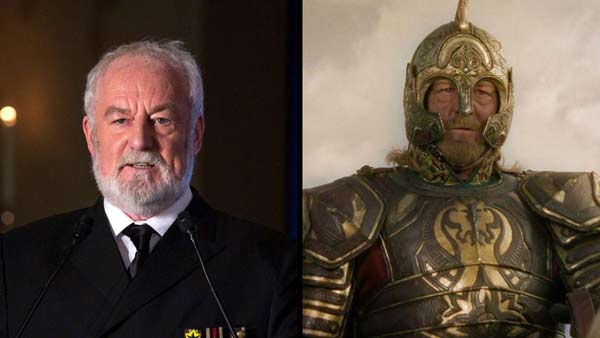
– Bernard Hill was an English actor who was 79 years old.
– He played significant roles in the films Titanic (1997) and ‘The Lord of the Rings’ (2001).
– Both of these films won 11-1 Oscars at the time.
– He also worked in theater and TV shows during his 50-year career.
PDF Download: Click here

